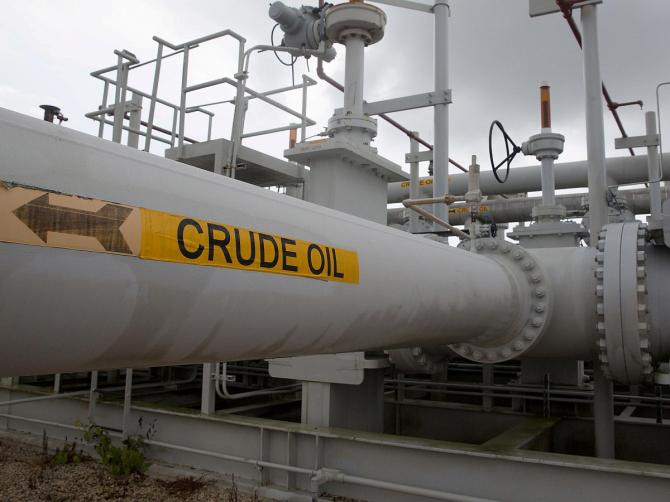Crude oil shipments from the US to India rose to the highest levels in November since the conflict began in Ukraine in late February, sparking hopes of a resurgence in oil flows from the US to the subcontinent, reveals shipping data.

Shipments from the US have surged as Western nations prepare to impose additional sanctions on Russian crude flows.
The US shipped around 450,000 barrels per day of crude last month to India, twice that of shipments in October, according to data from London-based commodity intelligence provider Vortexa.
The US shipped 230,000 barrels per day of crude in October to India, Indian customs data shows.
The February volumes were over 500,000 barrels per day, says Vortexa, which calculates crude flows using the ship-tracking software.
Delivered volumes of the US crude were as high as 700,000 barrels per day in February, shows Indian Customs data, which reports delivered cargo.
Customs data tends to differ from the ship-tracking data offered by commodity data analytics companies.
The US volumes plunged in May to as low as 100, 000 barrels per day - the lowest this year.
“While Russian volumes are still strong, there is a marked increase in barrels from the US in November to India - likely a result of the wide Brent-West Texas Intermediate (WTI) spread,” says Matt Smith, a senior analyst at Paris-based commodity data provider Kpler.
The spread was as high as $9.3 in mid-November, meaning the US benchmark was much cheaper last month.
Washington has been concerned over losing billions of dollars in oil export revenues to Russia after Moscow became the biggest supply source for India since September, partly displacing US oil.
It expects flows into India to stabilise after the Group of Seven nations and Australia agreed on a $60-per-barrel price cap on exports of Russian oil from December 5.
The cap is close to the $67-per-barrel traded price of the Russian Urals blend, which itself is at a discount of about 20 per cent to the Brent - a pricing benchmark for the Atlantic Basin oil - and at a 16 per cent discount to the WTI - a US oil benchmark.
The delivered cost of the US crude to India in October was $97 per barrel, while Russian grades were cheaper at $86 per barrel. Landed costs include freight, insurance and trader margins.
Explaining the significance of the Brent-WTI spread, R Ramachandran, an oil industry consultant, says the gap between the two benchmarks determines how Indian refiners source cargoes.
For instance, both Brent and WTI are typically low sulphur, sweeter grades.
They tend to be more expensive than high sulphur crudes but are suited to those refineries that lack the complexity to process dirtier grades.
“Value creation is the key driver for a refinery to decide on any crude,” Ramachandran added.
The US crudes, which are a substitute for Brent-linked low sulphur, sweet West African grades, are usually more expensive for Indian refiners because of higher freight costs, compared to Angolan or Nigerian grades.
Vessel availability is also a factor, given the long voyage times.
But if WTI, the US benchmark, is much cheaper than Brent, then the lower cost of the US oil makes up for higher freight costs, making them profitable to process at Indian plants, says Ramachandran, a former refinery head at Bharat Petroleum Corporation.
For instance, when the US volumes to India fell to a year’s low in May, the gap between Brent and WTI was as low as 37 cents per barrel.
Volumes doubled in June after the spread widened to over $9 a barrel, according to data from YCharts, a US Cloud-based investment research platform.
But the Brent-WTI spread tells only half the story, says an industry official, pointing to June and July when the spread was $12-$14 per barrel but US volumes were still half of what they were in November at 250,000 barrels per day, while the Russian volumes averaged 850,000 barrels per day because of the discounts.
The average price of the US and Russian crudes was at similar levels in the calendar year 2021 (CY21) but widened by $18 per barrel, or 15 per cent in July, according to Customs data.
The gap in October was $11 a barrel.
Geopolitics also plays a pivotal role because the US is trying to alienate Russia from India to protect its business interests, said the official.
It was former US President Donald Trump who urged Prime Minister Narendra Modi to import US crude to reduce the trade deficit between both nations. New Delhi had then asked state refiners, especially India Oil Corporation, to step up US purchases, said the official.
The US companies earned $10.4 billion from oil sales in CY21, nearly 5x more than Russia.
The tables turned after the Ukraine siege. Russia earned $17.2 billion in the January-October period, compared to $9.1 billion by the US, according to Customs data.
Russia’s market share by volume multiplied nearly twenty-fivefold in October this year from CY21, while the share of the US oil has plunged by half.










